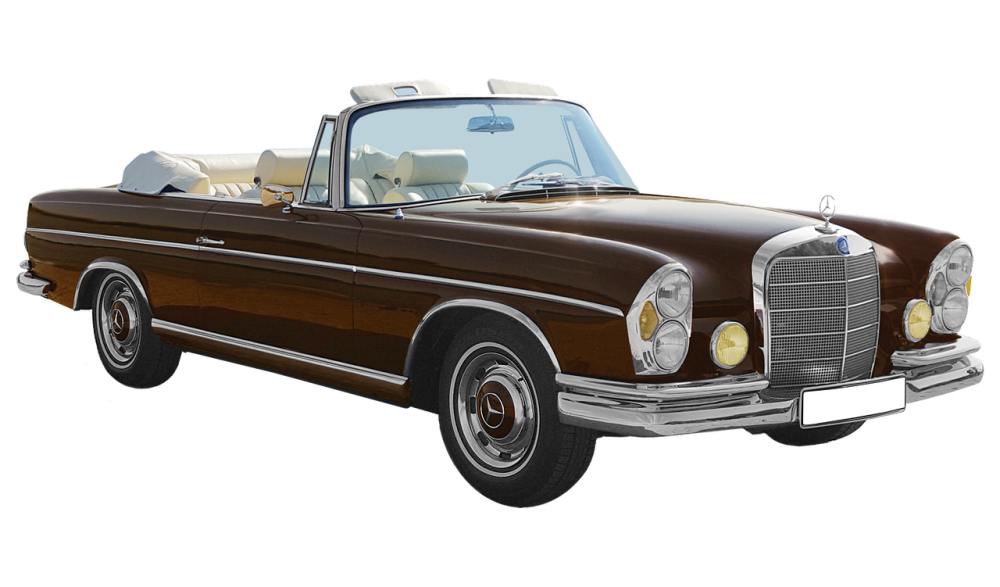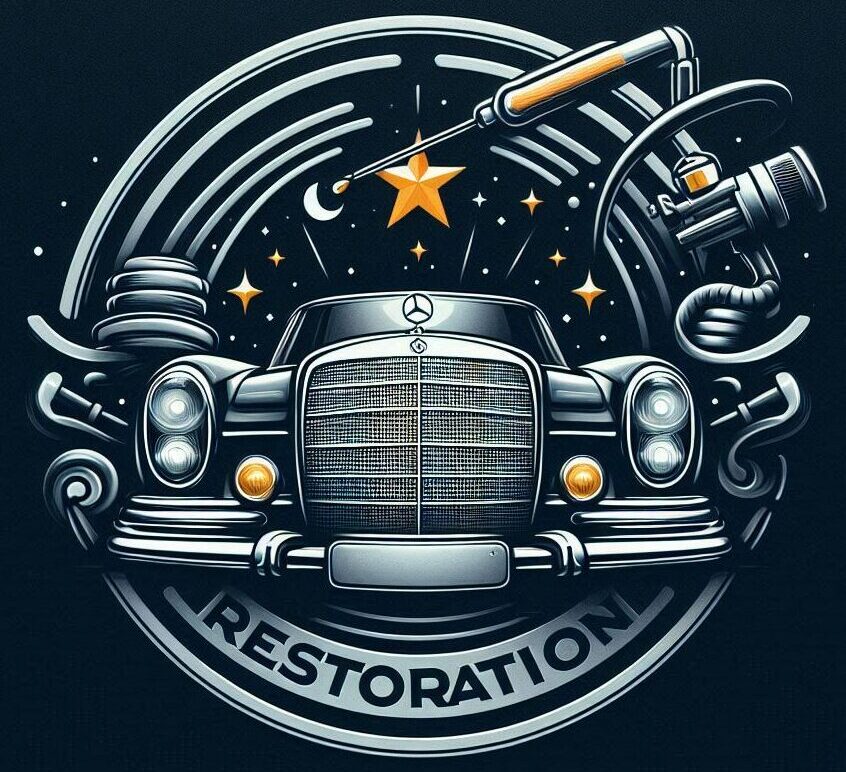
The Mercedes-Benz W108, produced between 1965 and 1972, is a shining example of mid-century luxury and engineering excellence. With its clean lines, powerful engines, and impeccable build quality, the W108 is a classic car that has aged gracefully. Whether you’re looking to restore one for personal enjoyment, as an investment, or to showcase at classic car events, the W108 offers incredible restoration potential.
The Mercedes-Benz W108 series has long been celebrated for its blend of luxury, performance, and timeless design. Introduced in the 1960s, it’s a car that many enthusiasts hold dear, not just for its aesthetic appeal but also for its engineering robustness. This model, produced until the early 1970s, symbolizes a golden era of automotive creativity and craftsmanship. It’s no wonder that many car collectors find the W108 incredibly attractive. It’s more than just a car; it’s a piece of art on wheels.
What makes the W108 stand out? The W108 features clean, elegant lines combined with a robust body structure that exudes confidence and sophistication. From its imposing front grille to the sleek tail fins, every design element is meticulously crafted, reflecting Mercedes-Benz’s commitment to quality and style. Its interior, decked with premium materials and plush seating, offers a luxurious driving experience that was ahead of its time.
Restoring a W108 is bringing an old car back to life and preserving its legacy. Each restored W108 holds stories of the past, serving as a testament to the innovative spirit of its era. For many, engaging in the restoration process is not just a hobby, but a thrilling journey that connects them with history, making it all the more personal and meaningful.
This guide will take you through what makes the W108 such an appealing restoration project and provide practical tips and resources to help you along the way.
Why the Mercedes-Benz W108 Stands Out
The W108 is often regarded as a pinnacle of Mercedes-Benz engineering during its era. It was available in both six-cylinder and V8 engine configurations, with models like the 280S, 280SE, and 300SEL offering varying levels of luxury and performance. The car’s timeless design, stately proportions, and iconic grille make it a favourite among classic car enthusiasts.
Restoring a W108 allows you to own a piece of automotive history and create something truly unique. Let’s examine its restoration potential step by step.
Step 1: Assessing the Condition of the Car
Understanding the car’s current condition is essential before starting your restoration. This will help you effectively plan your budget and timeline.
What to Do: Look for common problem areas in W108 models, such as rust on the undercarriage, wheel arches, and door sills. Check the engine’s condition, the suspension’s state, and the interior. If the car is unused, be prepared to replace critical mechanical components.
Resources:
- Inspection Checklist: Use Hagerty’s Classic Car Inspection Guide to evaluate your W108’s condition.
- Local Experts: Hire a professional inspector or vintage car mechanic through Yelp for a detailed assessment.
Step 2: Planning Your Restoration Goals
Restoration projects vary widely, from partial restorations to factory-standard rebuilds. Defining your goals early ensures you stay focused and avoid unnecessary expenses.
What to Do: Decide whether you want to restore the car to its original factory specs or customize it with modern upgrades. For example, some owners prefer to modernize the suspension and braking system for better drivability while keeping the exterior and interior true to the car’s vintage roots.
Resources:
- Restoration Inspiration: Check out W108 restoration stories on Hemmings for ideas.
- Classic Mercedes Forums: Join BenzWorld to connect with other W108 owners who can share tips and advice.
Step 3: Sourcing Parts for the W108
Finding the right parts is critical to maintaining the car’s authenticity and value. Fortunately, the W108 has a strong aftermarket and parts network.
What to Do: Start by sourcing OEM (original equipment manufacturer) parts whenever possible. Online marketplaces, Mercedes-Benz Classic Centers, and specialized suppliers are great options. For hard-to-find parts, consider joining forums or attending classic car shows where sellers often have rare items.
Resources:
- Mercedes-Benz Classic Parts: Find authentic parts at the Mercedes-Benz Classic Center.
- Used Parts Marketplace: Browse listings on eBay Motors for rare W108 components.
- Specialty Shops: SL Shop is an excellent resource for classic Mercedes-Benz parts.
Step 4: Addressing Rust and Bodywork
Rust is one of the biggest challenges when restoring a classic W108. If left untreated, it can compromise the car’s structure and appearance.
What to Do: Inspect the car thoroughly for rust, especially in common problem areas like the floor pans, fender wells, and trunk. Use rust-removal treatments for minor issues, but if the damage is severe, consider hiring a professional to replace affected panels. Apply a rust inhibitor and high-quality primer to protect the car in the long term.
Resources:
- Rust Removal Kits: Eastwood offers rust treatment products for vintage cars.
- Body Shop Locator: Find body shops experienced in classic car restoration on Yelp.
Step 5: Restoring the Interior
The W108’s luxurious interior, with its wood trim, leather seats, and chrome accents, is a major part of its appeal. Restoring it can elevate the car’s overall value and charm.
What to Do: Assess the condition of the seats, dashboard, and carpeting. If necessary, use a high-quality conditioner or have the leather seats reupholstered. Refinish or replace the wood trim to restore its shine. Ensure all switches, gauges, and electronics are functioning properly.
Resources:
- Leather Restoration: Leatherique offers leather care products tailored for vintage interiors.
- Wood Trim Refinishing: Find wood restoration kits at Autogeek.
Step 6: Rebuilding or Refreshing the Engine
The engine is the heart of the W108, and restoring it to peak performance ensures a smooth and reliable driving experience.
What to Do: Depending on the condition of your engine, you may need a complete rebuild or just a refresh. Replace worn components like pistons, gaskets, and timing chains. Clean or replace the fuel injection system for optimal performance. For major engine work, hire a mechanic experienced in vintage Mercedes engines.
Resources:
- Engine Rebuild Kits: Find compatible rebuild kits at Summit Racing.
- Mechanic Finder: Use Autozone to locate specialists near you.
Step 7: Updating the Suspension and Brakes
Suspension and brake upgrades can significantly improve the W108’s handling and ride quality, making it safer and more enjoyable to drive.
What to Do: Inspect the suspension for worn bushings, shocks, and springs. Consider modern replacements for better drivability. For the brakes, upgrade to modern disc brakes if your car has older drum brakes to improve stopping power.
Resources:
- Parts and Upgrades: FCP Euro offers suspension and brake parts for W108 models.
Step 8: Adding the Finishing Touches
The small details make all the difference when restoring a classic car. Polishing chrome trim, aligning body panels, and installing authentic badges can elevate your restoration.
What to Do: Polish the chrome bumpers and trim to bring out their shine. Replace any missing emblems or badges with authentic ones. For a final touch, detail the car thoroughly inside and out before showing it off.
Resources:
- Detailing Supplies: Meguiar’s provides products for restoring and maintaining classic cars.
- Authentic Badges: Search for replacement badges on eBay Motors.
Wrapping Up Unlocking The Restoration Potential Of The Mercedes-Benz W108: 8 Key Steps To Bring It Back To Life
Restoring a Mercedes-Benz W108 is an excellent project that allows you to bring a piece of automotive history back to life. With its timeless design, luxurious interior, and reliable performance, the W108 has enormous restoration potential for enthusiasts and collectors.
By following these steps and using the resources provided, you’ll be well on your way to transforming a W108 into a stunning classic that you can proudly display or enjoy on the open road. Happy restoring!
Spot the Difference: W108 vs. W109 and W111
When it comes to understanding the differences between the W108, W109, and W111 models, it’s essential to look at the features and innovations that distinguish each of these vehicles. Each model has its unique characteristics that cater to different tastes and driving experiences, yet they all exude that classic Mercedes charm.
Starting with the W108 and W109, these two are often compared due to their shared lineage, but they do have some distinct features. The W109 was essentially a more luxurious version of the W108, specifically the Type 300 SEL with its extended wheelbase, which provided extra comfort and an air suspension system to enhance the ride quality. This made the W109 a bit of a step-up in terms of sophistication and technological advancements compared to the W108.
The W111, on the other hand, was part of the Mercedes-Benz’s luxury lineup that preceded the W108. Known for its distinctive “Fintail” design, the W111 had a more classic look with exceptional interior appointments. While the W111 shares certain design cues with the W108, it represents a different era of Mercedes design, with a more old-school aesthetic and an emphasis on luxury over performance.
Performance-wise, these models also differ significantly. The W108 and W109 were often equipped with higher-powered engines compared to the W111, focusing on delivering a more spirited driving experience.
Is Investing in a Classic Mercedes-Benz Worth It?
Owning a classic Mercedes-Benz, like the cherished W108, is about embracing a lifestyle that appreciates craftsmanship, history, and, quite honestly, a bit of automotive mystique. When considering the investment potential, these vehicles often hold their value well, with market trends showing a steady appreciation for classic models in good condition.
Buying a vintage Mercedes can be a smart move, both emotionally and financially. The joy of driving such a finely crafted piece of machinery, coupled with the pride of ownership, offers an unparalleled experience.
Of course, there are factors to consider before investing. First and foremost, the condition of the car is vital. While some enthusiasts enjoy rejuvenating these classics, from rusty relics to shining stars, it can be costly. Ensuring the initial purchase is worth the required restorations is a crucial first step.
Balancing emotional satisfaction with potential financial gains might seem tricky, but for many, the love for the car overrides monetary concerns. That said, a clear understanding of your budget, the scope of work needed, and the car’s market value should guide your decision-making process.

